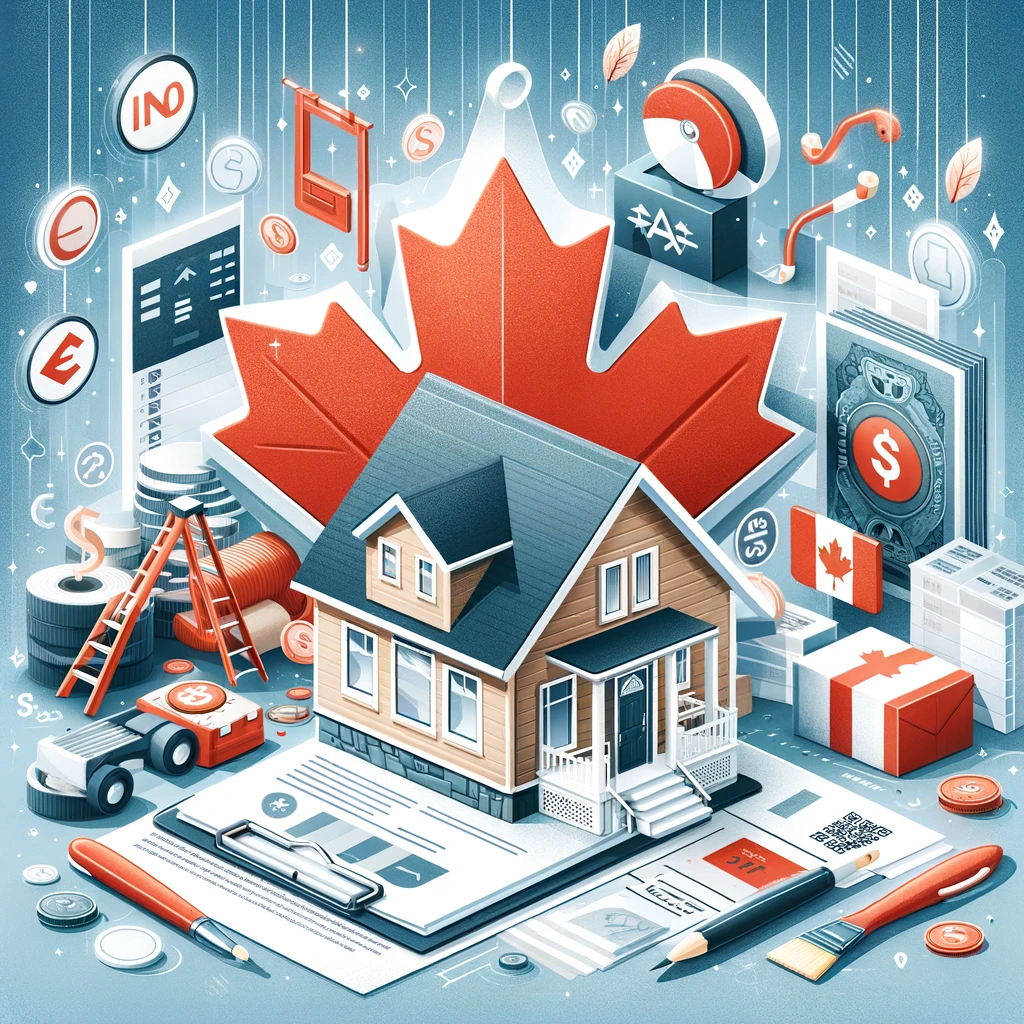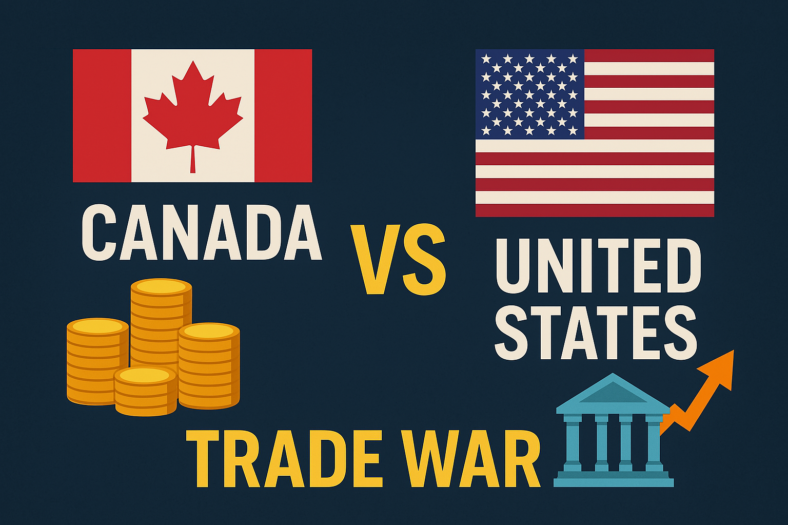Embarking on a home renovation journey is an exciting endeavor, but it often comes with a significant financial commitment. Whether you’re looking to revamp your kitchen, add an extra bedroom, or enhance your outdoor living space, the costs can quickly add up. In Canada, where homeowners take great pride in maintaining and improving their properties, finding the right financing solution is crucial. This guide aims to explore the landscape of home renovation loans in Canada, offering insights into the best options available to homeowners. From traditional bank loans to government-backed programs and innovative online lenders, we’ll delve into the various avenues you can explore to fund your renovation dreams. By understanding the features, benefits, and potential drawbacks of each loan type, you’ll be empowered to make informed decisions that align with your financial goals and renovation aspirations. Whether you’re a first-time homeowner or a seasoned property investor, navigating the world of home renovation loans can be daunting. But fear not! With the comprehensive information provided in this guide, you’ll be equipped to embark on your renovation journey with confidence, knowing that you have the resources and knowledge to transform your house into the home of your dreams. So let’s dive in and discover the best home renovation loan options that Canada has to offer.
Best home renovation loans in Canada – Top Picks
What are home renovation loans?
Home renovation loans are financial products specifically designed to help homeowners fund the costs associated with renovating, remodeling, or improving their properties. These loans provide borrowers with the necessary funds to undertake home improvement projects, whether they involve minor upgrades or major renovations.
There are various types of home renovation loans available, each with its own terms, conditions, and eligibility criteria. Some common types include:
Personal Loans: Personal loans are unsecured loans that can be used for a variety of purposes, including home renovations. They typically have fixed interest rates and repayment terms, making them predictable and easy to budget for. Personal loans may be obtained from banks, credit unions, or online lenders.
Home Equity Loans: Home equity loans allow homeowners to borrow against the equity they have built up in their homes. Equity is the difference between the current market value of the property and the amount owed on the mortgage. These loans usually have fixed interest rates and are secured by the property. Home equity loans often offer higher loan amounts than personal loans and may have longer repayment terms.
Home Equity Lines of Credit (HELOCs): HELOCs are similar to home equity loans but function more like a revolving line of credit. Borrowers can access funds as needed, up to a predetermined credit limit, and only pay interest on the amount borrowed. HELOCs typically have variable interest rates, which means that monthly payments may fluctuate based on market conditions.
Government Programs: Some government programs offer financial assistance or incentives for home renovations, particularly for energy-efficient upgrades or accessibility modifications. These programs may include grants, forgivable loans, or low-interest loans administered by federal, provincial, or municipal governments.
Construction Loans: Construction loans are specifically designed to fund major renovation projects, such as building additions or extensive structural changes. These loans typically have a draw schedule, where funds are released in stages as the renovation progresses. Once the renovation is complete, the loan may be converted into a traditional mortgage or paid off in full.
Credit Cards: While not typically recommended for large-scale renovations due to their high interest rates, credit cards can be used for smaller projects or to cover unexpected expenses. Some credit cards offer promotional financing rates or rewards programs that can help offset renovation costs.
Overall, home renovation loans provide homeowners with the flexibility and financial support they need to turn their renovation visions into reality. By exploring the various loan options available and comparing interest rates, terms, and fees, homeowners can choose the financing solution that best fits their needs and budge.
How do home renovation loans work?
Home renovation loans work by providing homeowners with the necessary funds to finance their renovation projects. These loans come in various forms, each with its own terms, conditions, and repayment options. Here’s a general overview of how home renovation loans typically work:
Application Process: To apply for a home renovation loan, homeowners must first identify the type of loan that best suits their needs and financial situation. They then submit an application to a lender, providing information about their income, credit history, property value, and the scope of the renovation project.
Loan Approval: Once the application is submitted, the lender evaluates the homeowner’s financial profile and the proposed renovation project. This evaluation helps the lender determine the borrower’s creditworthiness and assess the risk associated with the loan. If approved, the lender will provide the borrower with the loan amount, interest rate, and repayment terms.
Funding: After approval, the loan funds are disbursed to the homeowner. The method of disbursement depends on the type of loan. For example, with a personal loan, the funds may be deposited directly into the borrower’s bank account, while with a home equity loan or HELOC, the funds may be available as a line of credit or a lump sum.
Renovation: With the funds in hand, homeowners can proceed with their renovation project. They can use the loan proceeds to cover various expenses, including materials, labor, permits, and other associated costs.
Repayment: Home renovation loans typically have fixed monthly payments over a predetermined loan term. The repayment terms vary depending on the type of loan and the lender’s policies. Homeowners must make regular payments on time to repay the loan in full, including principal and interest.
Interest Rates and Fees: Home renovation loans may have fixed or variable interest rates, depending on the type of loan and prevailing market conditions. Additionally, lenders may charge fees such as origination fees, closing costs, or prepayment penalties. Borrowers should carefully review the loan terms and disclosures to understand the total cost of borrowing.
Secured vs. Unsecured Loans: Some home renovation loans, such as home equity loans and HELOCs, are secured by the borrower’s property, meaning that the home serves as collateral for the loan. If the borrower defaults on the loan, the lender may have the right to foreclose on the property. In contrast, personal loans are typically unsecured, meaning they do not require collateral but may have higher interest rates as a result.
Overall, home renovation loans provide homeowners with the financial flexibility to fund their renovation projects while spreading the cost over time through manageable monthly payments. By understanding how these loans work and comparing options from different lenders, homeowners can choose the financing solution that best meets their needs and budget.
Pros and cons of home renovation loans
Home renovation loans offer homeowners the financial flexibility to transform their properties according to their needs and preferences. However, like any financial product, they come with both advantages and disadvantages. Let’s explore the pros and cons:
Pros:
Access to Funds: Home renovation loans provide homeowners with access to the funds needed to complete their renovation projects, allowing them to make improvements without having to drain their savings or retirement accounts.
Flexible Repayment Terms: Many home renovation loans offer flexible repayment terms, including fixed or variable interest rates and various loan durations. This flexibility allows homeowners to choose a repayment schedule that aligns with their budget and financial goals.
Increased Property Value: Renovations financed through a home renovation loan can increase the value of the property. Whether it’s updating the kitchen, adding a bathroom, or enhancing curb appeal, these improvements can make the home more attractive to potential buyers and command a higher selling price in the future.
Tax Deductibility: In some cases, the interest paid on home renovation loans may be tax-deductible, particularly if the renovations increase the property’s value. Homeowners should consult with a tax advisor to determine if they qualify for any tax benefits.
Convenience: Home renovation loans streamline the financing process by providing a single source of funding for all renovation-related expenses. This eliminates the need to juggle multiple credit cards, loans, or lines of credit, simplifying budgeting and financial management.
Cons:
Cost of Borrowing: Home renovation loans come with costs beyond the principal amount borrowed, including interest charges, origination fees, closing costs, and other associated fees. These costs can add up over time and increase the total amount repaid.
Risk of Default: If homeowners fail to make timely payments on their renovation loan, they risk defaulting on the loan, which can have serious consequences, including damage to their credit score and potential foreclosure if the loan is secured by the property.
Impact on Debt-to-Income Ratio: Taking on additional debt through a home renovation loan can affect homeowners’ debt-to-income ratio, which lenders consider when evaluating eligibility for future loans or lines of credit. High debt levels relative to income can make it challenging to qualify for other types of financing.
Property Lien: Some home renovation loans, such as home equity loans and HELOCs, are secured by the borrower’s property. This means that if the borrower defaults on the loan, the lender may have the right to foreclose on the property to recover the outstanding debt.
Market Risk: If homeowners borrow against the equity in their homes to finance renovations and property values decline, they may find themselves owing more on their mortgage than the property is worth. This situation, known as being “underwater,” can limit options for refinancing or selling the property in the future.
In summary, while home renovation loans can provide valuable financial support for homeowners looking to improve their properties, it’s essential to carefully weigh the pros and cons and consider the long-term implications before committing to a loan. By understanding the potential benefits and risks, homeowners can make informed decisions that align with their financial goals and renovation aspirations.
Types of home renovation loans available in Canada
In Canada, homeowners have access to various types of home renovation loans to finance their renovation projects. Here are some of the most common options:
Personal Loans: Personal loans are unsecured loans that can be used for a variety of purposes, including home renovations. They typically have fixed interest rates and terms, making them predictable and easy to budget for. Personal loans can be obtained from banks, credit unions, or online lenders.
Home Equity Loans: Home equity loans allow homeowners to borrow against the equity they have built up in their homes. Equity is the difference between the current market value of the property and the amount owed on the mortgage. These loans usually have fixed interest rates and terms and are secured by the property.
Home Equity Lines of Credit (HELOCs): HELOCs are similar to home equity loans but function more like a revolving line of credit. Borrowers can access funds as needed, up to a predetermined credit limit, and only pay interest on the amount borrowed. HELOCs typically have variable interest rates and may be secured by the property.
Government Programs: Various government programs in Canada offer financial assistance or incentives for home renovations, particularly for energy-efficient upgrades or accessibility modifications. These programs may include grants, forgivable loans, or low-interest loans administered by federal, provincial, or municipal governments.
Construction Loans: Construction loans are specifically designed to fund major renovation projects, such as building additions or extensive structural changes. These loans typically have a draw schedule, where funds are released in stages as the renovation progresses. Once the renovation is complete, the loan may be converted into a traditional mortgage or paid off in full.
Credit Cards: While not typically recommended for large-scale renovations due to their high interest rates, credit cards can be used for smaller projects or to cover unexpected expenses. Some credit cards offer promotional financing rates or rewards programs that can help offset renovation costs.
These are just a few examples of the types of home renovation loans available in Canada. Each option has its own advantages, disadvantages, and eligibility criteria, so it’s essential for homeowners to carefully research and compare their options before choosing the best financing solution for their renovation needs. Additionally, consulting with a financial advisor or mortgage broker can help homeowners navigate the complexities of home renovation financing and make informed decisions.
How to find the best home renovation loans in Canada
Finding the best home renovation loans in Canada requires thorough research and comparison shopping. Here’s a step-by-step guide to help you find the most suitable financing option for your renovation project:
Assess Your Needs: Start by determining the scope and cost of your renovation project. Consider factors such as the type of renovations you’re planning, the estimated cost of materials and labor, and your timeline for completing the project.
Evaluate Your Financial Situation: Review your current financial situation, including your income, expenses, savings, and existing debt. Determine how much you can afford to borrow and what monthly payments you can comfortably manage.
Research Lenders: Explore various lenders that offer home renovation loans in Canada, including banks, credit unions, online lenders, and government programs. Look for lenders that specialize in home renovation financing and have a good reputation for customer service and reliability.
Compare Loan Options: Once you’ve identified potential lenders, compare the terms and features of their home renovation loan products. Pay attention to factors such as interest rates, loan amounts, repayment terms, fees, and eligibility requirements. Consider whether you prefer a fixed or variable interest rate and whether you need a secured or unsecured loan.
Check Eligibility Requirements: Review the eligibility criteria for each loan option to ensure you meet the lender’s requirements. This may include factors such as credit score, income, employment history, and property value.
Get Prequalified: If possible, get prequalified for home renovation loans from multiple lenders. Prequalification involves submitting basic information about your finances to the lender, who will then provide an estimate of the loan amount and terms you may qualify for. This can help you narrow down your options and focus on lenders that are likely to offer the best terms.
Read Reviews and Testimonials: Before making a decision, read reviews and testimonials from other borrowers who have used the lender’s services. This can provide valuable insights into the lender’s reputation, customer satisfaction, and overall experience.
Consider Government Programs: Explore any government programs or incentives available for home renovations in your area. These programs may offer grants, forgivable loans, or low-interest loans to help homeowners finance energy-efficient upgrades or accessibility modifications.
Consult with Professionals: Consider seeking advice from a financial advisor, mortgage broker, or real estate agent who specializes in home renovation financing. They can provide personalized guidance and help you navigate the complexities of the lending process.
Review and Finalize: Once you’ve compared your options and chosen a lender, carefully review the loan terms and disclosures before finalizing the loan agreement. Make sure you understand all the terms and conditions, including the interest rate, repayment schedule, fees, and any potential penalties for late payments or early repayment.
By following these steps and conducting thorough research, you can find the best home renovation loans in Canada that meet your needs and budget, allowing you to finance your renovation project with confidence.
Common home renovation loan fees and interest rates
Common home renovation loan fees and interest rates can vary depending on the type of loan, the lender, and the borrower’s financial profile. Here’s an overview of some typical fees and interest rates associated with home renovation loans in Canada:
Interest Rates:
Personal Loans: Interest rates for personal loans can range from around 5% to 30%, depending on factors such as the borrower’s credit score, income, and repayment term. Rates may be fixed or variable, with fixed rates providing stability and predictable monthly payments, while variable rates may fluctuate based on market conditions.
Home Equity Loans: Home equity loan interest rates are typically lower than personal loan rates because they are secured by the borrower’s property. Rates may range from around 3% to 15%, with fixed or variable options available. Borrowers with higher credit scores and lower loan-to-value ratios (LTVs) may qualify for lower rates.
Home Equity Lines of Credit (HELOCs): HELOC interest rates are often variable and tied to the prime rate or another benchmark rate. Rates may start as low as the prime rate plus a margin, which can vary depending on the lender and the borrower’s creditworthiness. HELOC rates may fluctuate over time, affecting monthly payments.
Government Programs: Interest rates for government-sponsored home renovation loans or grants may be subsidized or discounted compared to traditional financing options. These programs may offer below-market interest rates to encourage energy-efficient renovations or improvements that enhance accessibility.
Fees:
Origination Fees: Some lenders charge origination fees to cover the costs of processing the loan application and underwriting the loan. Origination fees are typically expressed as a percentage of the loan amount and may range from 0.5% to 5% or more.
Closing Costs: Closing costs for home renovation loans may include fees for appraisals, title searches, legal services, and other administrative expenses. These costs can vary depending on the lender, the size of the loan, and the complexity of the transaction.
Annual Fees: Some lenders charge annual fees for home equity lines of credit (HELOCs) to maintain the line of credit and cover administrative costs. Annual fees are typically charged regardless of whether the borrower uses the full credit line.
Prepayment Penalties: Some loans may have prepayment penalties, which are fees charged if the borrower pays off the loan before the end of the term. Prepayment penalties are designed to compensate the lender for lost interest income and may be expressed as a percentage of the remaining balance or a certain number of months’ interest.
Late Payment Fees: Lenders may charge late payment fees if borrowers fail to make their monthly payments on time. Late payment fees are typically a flat amount or a percentage of the overdue payment and can add up over time if payments are consistently late.
Rate Lock Fees: For loans with variable interest rates, borrowers may have the option to lock in a fixed rate for a certain period. Lenders may charge a fee for this service, which can vary depending on the length of the rate lock period and other factors.
It’s essential for borrowers to carefully review the loan terms and disclosures provided by the lender to understand all the fees and charges associated with the loan. By comparing rates, fees, and other terms from multiple lenders, borrowers can choose the home renovation loan that offers the best overall value for their needs and budget.
What are the requirements to apply for a home renovation loan?
The specific requirements to apply for a home renovation loan can vary depending on the type of loan, the lender, and the borrower’s financial situation. However, there are some common requirements that most lenders typically look for when evaluating loan applications. Here are the key requirements to consider when applying for a home renovation loan:
Good Credit Score: Lenders typically look for borrowers with a good credit score, which demonstrates a history of responsible borrowing and repayment. While specific credit score requirements can vary, a FICO score of 670 or higher is generally considered good, although some lenders may accept lower scores depending on other factors.
Stable Income: Lenders want assurance that borrowers have a stable source of income to repay the loan. This may include employment income, self-employment income, retirement benefits, or other sources of income. Borrowers may need to provide proof of income, such as pay stubs, tax returns, or bank statements.
Low Debt-to-Income Ratio: Lenders typically calculate a borrower’s debt-to-income (DTI) ratio to assess their ability to manage additional debt payments. A lower DTI ratio indicates that the borrower has sufficient income to cover their existing debts as well as the new loan payments. Most lenders prefer a DTI ratio of 43% or lower, although some may accept higher ratios depending on other factors.
Sufficient Equity: For home equity loans or HELOCs, borrowers must have sufficient equity in their property to qualify for the loan. Equity is the difference between the current market value of the property and the amount owed on the mortgage. Lenders may require a minimum amount of equity, such as 15% to 20% of the property’s value, depending on the loan-to-value (LTV) ratio.
Property Appraisal: Lenders may require a professional appraisal of the property to determine its current market value. This helps the lender assess the property’s equity and ensure that it meets their lending criteria. Borrowers are typically responsible for covering the cost of the appraisal.
Documentation: Borrowers must provide various documents to support their loan application, including identification, proof of income, tax returns, bank statements, and details about the renovation project. The specific documentation required may vary depending on the lender and the type of loan.
Other Factors: In addition to the requirements listed above, lenders may consider other factors when evaluating loan applications, such as the borrower’s employment history, assets, liabilities, and credit history. Borrowers with a strong financial profile and a demonstrated ability to manage debt responsibly are more likely to qualify for favorable loan terms.
It’s essential for borrowers to carefully review the eligibility criteria and documentation requirements provided by the lender before applying for a home renovation loan. By understanding the requirements and preparing the necessary documentation in advance, borrowers can improve their chances of qualifying for the loan and securing favorable terms.
Alternatives to home renovation loans
Home renovation loans are not the only option for financing home improvement projects. There are several alternatives that homeowners can consider, depending on their financial situation, preferences, and renovation needs. Here are some alternatives to home renovation loans:
Cash Savings: Using cash savings is one of the simplest and most cost-effective ways to finance home renovations. By saving up over time, homeowners can avoid taking on additional debt and the associated interest costs. While using cash savings may require more time to accumulate the necessary funds, it can provide peace of mind and financial flexibility.
Credit Cards: For smaller renovation projects or unexpected expenses, homeowners may consider using credit cards to cover the costs. Some credit cards offer promotional financing rates or rewards programs that can help offset renovation expenses. However, it’s essential to be cautious when using credit cards, as high interest rates can quickly accumulate if the balance is not paid off in full each month.
Home Equity: Homeowners who have built up equity in their properties may consider tapping into their home equity to finance renovations. This can be done through options such as home equity loans, home equity lines of credit (HELOCs), or cash-out refinancing. By leveraging their home equity, homeowners can access funds at potentially lower interest rates compared to personal loans or credit cards.
Personal Loans: Personal loans are unsecured loans that can be used for a variety of purposes, including home renovations. While they may have higher interest rates compared to home equity loans, personal loans offer flexibility and simplicity, as they do not require collateral. Borrowers can apply for personal loans from banks, credit unions, or online lenders.
Government Grants and Programs: Various government programs and incentives may be available to help homeowners finance energy-efficient upgrades or accessibility modifications. These programs may offer grants, forgivable loans, or low-interest loans administered by federal, provincial, or municipal governments. Eligibility criteria and available benefits vary depending on the program and location.
Contractor Financing: Some contractors offer financing options or payment plans to help homeowners spread out the cost of renovations over time. These financing arrangements may include deferred interest promotions, installment loans, or other financing solutions provided directly by the contractor. However, it’s essential to carefully review the terms and conditions of contractor financing to ensure it aligns with your budget and financial goals.
Home Improvement Loans from Retailers: Certain retailers or home improvement stores may offer financing options for purchases made through their stores. These financing programs may include promotional financing rates, deferred interest offers, or installment plans tailored to specific products or services. Homeowners should compare the terms and rates of retailer financing with other financing options to determine the best fit for their needs.
Each alternative has its own advantages, disadvantages, and eligibility criteria, so it’s essential for homeowners to carefully evaluate their options and choose the financing solution that best aligns with their financial goals and renovation needs. Consulting with a financial advisor or mortgage broker can also provide valuable guidance and help homeowners make informed decisions about financing their home improvements.
FAQs about best home renovation loans in Canada
A home renovation loan is a financial product designed to provide homeowners with the funds needed to finance renovation or improvement projects on their properties. These loans can be used to cover expenses such as materials, labor, permits, and other renovation-related costs.
In Canada, homeowners have access to various types of home renovation loans, including personal loans, home equity loans, home equity lines of credit (HELOCs), government programs, construction loans, and credit cards.
The requirements to qualify for a home renovation loan vary depending on the type of loan, the lender, and the borrower’s financial situation. Common eligibility criteria include a good credit score, stable income, sufficient equity in the property, and a low debt-to-income ratio.
Interest rates for home renovation loans in Canada can vary depending on the type of loan, the lender, and the borrower’s creditworthiness. Rates may be fixed or variable and typically range from around 3% to 30%, with lower rates available for secured loans such as home equity loans or HELOCs.
Common fees associated with home renovation loans may include origination fees, closing costs, annual fees (for HELOCs), prepayment penalties, late payment fees, and rate lock fees. It’s essential for borrowers to carefully review the loan terms and disclosures provided by the lender to understand all the fees and charges associated with the loan.
Yes, various government programs and incentives may be available to help homeowners finance energy-efficient upgrades or accessibility modifications. These programs may offer grants, forgivable loans, or low-interest loans administered by federal, provincial, or municipal governments.
To find the best home renovation loan in Canada, homeowners should research and compare loan options from multiple lenders, consider factors such as interest rates, fees, repayment terms, eligibility criteria, and customer reviews, and consult with a financial advisor or mortgage broker for personalized guidance.
In conclusion, home renovation loans in Canada offer homeowners the financial flexibility to transform their properties and create the living spaces of their dreams. Whether you’re planning a small-scale renovation or a major home overhaul, there are various loan options available to suit your needs and budget.
From personal loans and home equity loans to government programs and contractor financing, homeowners have a wide range of choices when it comes to financing their renovation projects. By comparing interest rates, fees, repayment terms, and eligibility criteria from multiple lenders, borrowers can find the best loan option that aligns with their financial goals and renovation aspirations.
While home renovation loans can provide valuable support for financing renovations, it’s essential for homeowners to borrow responsibly and consider the long-term implications of taking on additional debt. By carefully planning and budgeting for their renovation projects and exploring alternative financing options such as cash savings or government incentives, homeowners can achieve their renovation goals while minimizing financial strain.
Ultimately, home renovation loans can empower homeowners to unlock the full potential of their properties, increase their value, and enhance their quality of life. With the right financing solution and proper planning, homeowners can turn their renovation dreams into reality and create spaces that reflect their unique style and preferences.
Whether you’re updating a kitchen, remodeling a bathroom, or adding a new addition, home renovation loans provide the means to transform your house into the home you’ve always envisioned. So, take the first step towards your renovation journey, explore your financing options, and embark on the path to creating the home of your dreams in Canada.




















